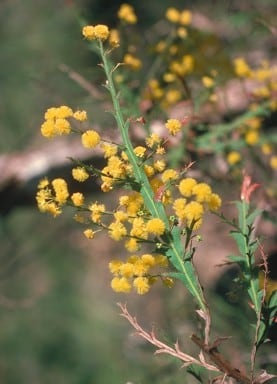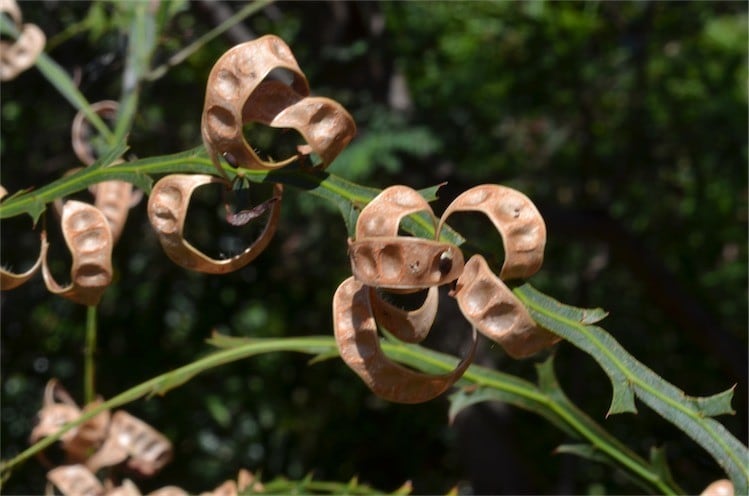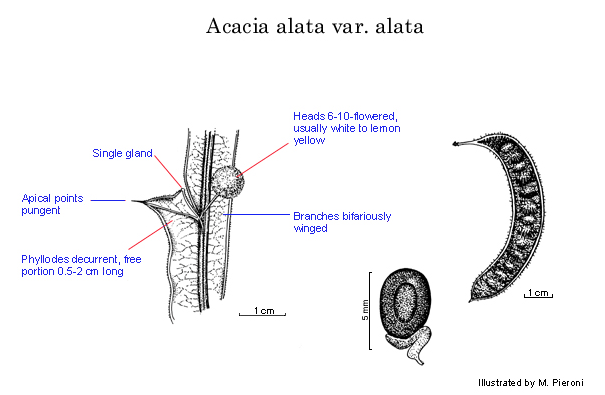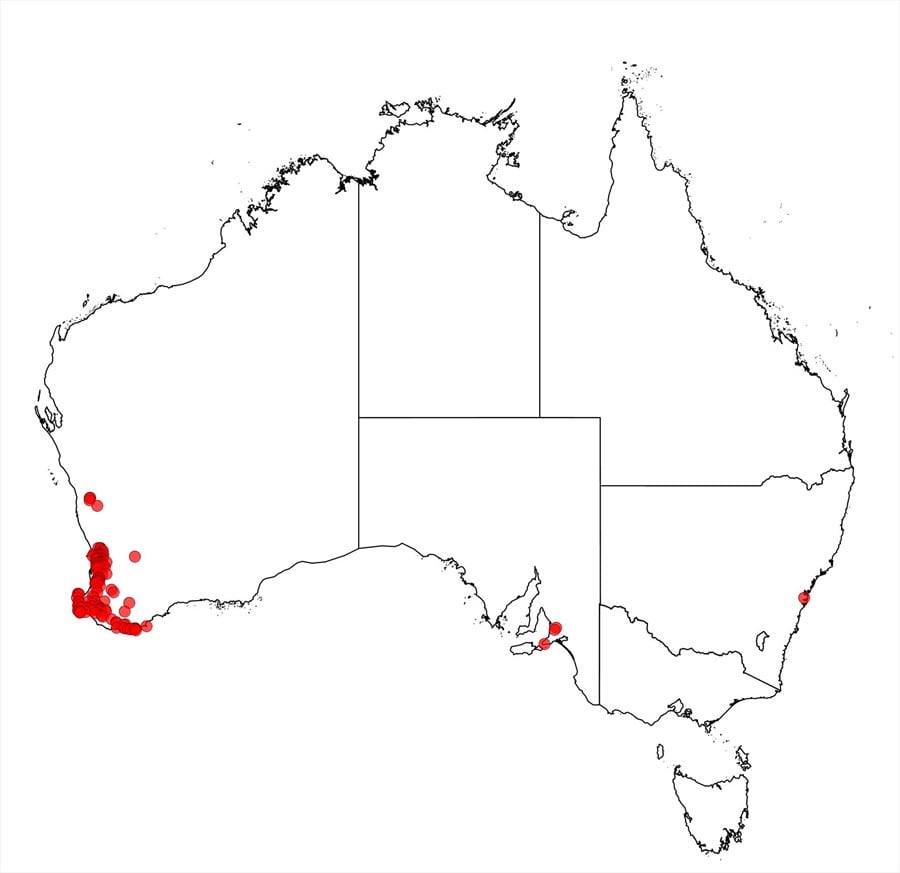Acacia alata R.Br. var. alata
WATTLE
Acacias of Australia
Family
Fabaceae
Distribution
Discontinuous, occurring from Perth S to Collie, Cape Naturaliste (c. 30 km WNW of Busselton) SE to Manjimup and Denmark E to Albany, with an outlier at Three Springs (c. 200 km N of Perth), W.A.
Description
Shrub 0.5–1.5 m high. Stipules spinose or subspinose. Phyllodes on non-flowering region of stems 2–10 mm wide; free portion of phyllodes 5–20 mm long, with apex spinose. Peduncles glabrous or hairy; heads 6–10-flowered, creamy white to lemon yellow, occasionally golden.
Habitat
Grows in a variety of habitats but often along creeks with laterite or loam in forest and woodland in the Darling Ra. Near Albany it grows in sand over granite in coastal heath and low woodland.
Specimens
W.A.: c. 10 km W of Three Springs, 27 June 1974, C.Chapman (MEL, PERTH); 41.8 km E of Irwin Inlet, near Denmark, 19 Feb. 1913, S.W.Jackson (CANB, K, MEL, PERTH, TLF); 1.6 km due S of Palgarrup, B.R.Maslin 2851 (MEL, PERTH); NE of Yallingup, S.Paust 205 (PERTH); Canning R., L.Preiss 997 (LUND, MO, W).
Notes
Widely cultivated in Europe last century, sometimes as A. scolopendria which is presumed to be a nomen nudum.
Appears to hybridise with A. applanata in a few places in the Darling Ra. near Perth.
Peduncles on specimens from Cape Naturaliste to Albany are hirsutellous to shortly pilose, further north they are normally glabrous. Smallest pods occur on plants from around Albany, i.e. 2–4 cm long and 5–6 mm wide.
FOA Reference
Data derived from Flora of Australia Volumes 11A (2001), 11B (2001) and 12 (1998), products of ABRS, ©Commonwealth of Australia
Author
B.R.Maslin
This identification key and fact sheets are available as a mobile application:
URL: https://apps.lucidcentral.org/wattle/
© Copyright 2018. All rights reserved.













